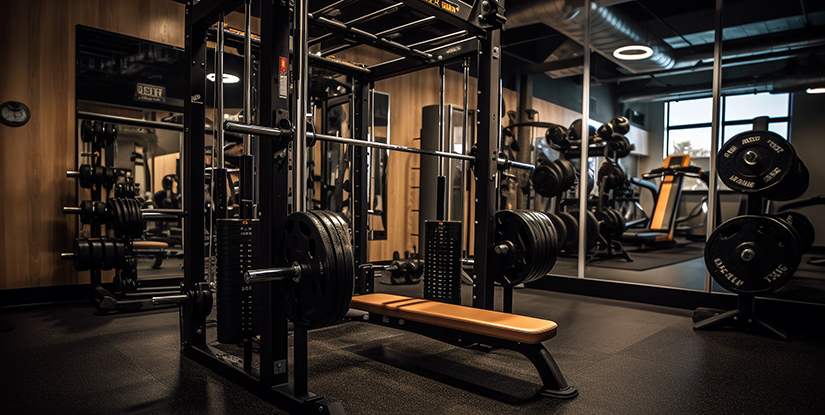Fitness Equipment Manufacturers: Sourcing, Quality, and Trends

Understanding Fitness Equipment Manufacturers
Selecting the right fitness equipment manufacturer is a strategic decision for gym operators, retailers, and brand owners. Manufacturers define product quality, compliance, lead times, and ultimately the customer experience. This guide outlines practical considerations—from materials and production capabilities to compliance, customization, and after-sales support—enabling procurement teams to make informed choices.
Key Manufacturer Capabilities
- Production scale: Small-batch vs. large-scale assembly lines.
- Technical expertise: Mechanical design, electronics integration, and software development for smart equipment.
- Material supply chain: Access to steel, alloys, durable plastics, and eco-friendly alternatives.
- Certifications: ISO 9001, CE, ETL, and sport-specific safety certifications.
Quality Control and Testing
Robust quality control ensures product safety and longevity. Leading manufacturers implement multi-stage inspection processes including incoming material verification, in-process monitoring, and final functional testing. Important tests include fatigue testing, load capacity verification, electrical safety tests for powered equipment, and corrosion resistance for outdoor units.
Compliance, Certifications, and Standards
Regulatory compliance varies by market. For the EU, CE marking and relevant EN standards apply. North American markets often require ETL or CSA listings for powered devices. ISO 9001 demonstrates quality management systems, while ISO 14001 indicates environmental management practices. Verify that manufacturers can provide test reports and compliance documentation for your target markets.
OEM and ODM Services
Manufacturers typically offer OEM (Original Equipment Manufacturing) and ODM (Original Design Manufacturing) services. OEM is suitable when you have established designs and require branding and packaging solutions. ODM is helpful for retailers or startups seeking turnkey products developed from the manufacturer's existing designs, allowing faster time-to-market but with less design exclusivity.
Materials and Sustainable Options
Material selection impacts durability, performance, and cost. Common choices:
- High-tensile steel for frames and structural components.
- ABS and reinforced polymers for housings and consoles.
- Electroplated or powder-coated finishes for corrosion resistance.
- Eco-conscious alternatives: recycled steel, bio-based polymers, low-VOC coatings.
Smart Equipment and Technology Integration
Demand for connected fitness equipment grows. Manufacturers that integrate Bluetooth, Wi-Fi, touch consoles, streaming capabilities, and SDKs for third-party apps provide added value. Ensure firmware update processes, cybersecurity measures, and data privacy compliance are clearly defined in contracts.
Supply Chain, Lead Times, and Logistics
Reliable lead times depend on production capacity and raw material availability. Seasonal demand spikes and global logistics disruptions can affect timelines. Discuss inventory strategies—safety stock, consignment, and bonded warehousing—and shipping options, including FCL/LCL sea freight and air freight for urgent orders.
Customization and Branding
Customization options commonly include frame color, upholstery materials, console branding, user-interface language, and packaging. Clarify minimum order quantities (MOQs) and tooling costs for bespoke components. Negotiate intellectual property protections when sharing proprietary designs.
Cost Considerations and Total Cost of Ownership
Beyond unit price, evaluate warranty terms, expected lifespan, maintenance requirements, and spare parts availability. Ask for mean-time-between-failure (MTBF) data and typical maintenance schedules to estimate lifecycle costs. Higher upfront investment in quality often reduces total cost of ownership.
Factory Audits and Supplier Evaluation
Conduct on-site audits or third-party inspections covering production processes, labor practices, health and safety, and environmental compliance. Key audit checkpoints include equipment calibration, employee training records, and traceability of critical components.
Working with Contract Manufacturers
Contract manufacturing can accelerate scaling for brands without internal production. Establish clear service-level agreements (SLAs) for quality, delivery, and change management. Define escalation paths and penalties for repeated non-conformance.
Trends Shaping Manufacturing
- Modular designs for easier repair and upgrade.
- Increased automation and robotics in assembly lines.
- Greater emphasis on sustainable materials and circular economy practices.
- Integration of user data analytics to inform product improvements.
How to Select the Right Manufacturer
- Define technical and regulatory requirements for your target market.
- Request detailed capability matrices, sample units, and test reports.
- Obtain multiple quotes and compare MOQs, lead times, and warranty terms.
- Perform audits and check references from existing clients.
- Start with pilot orders to validate quality before scaling volume.
FAQs
- Q: What certifications matter most?
A: ISO 9001, CE/EN, ETL/CSA depending on market. - Q: OEM or ODM—what to choose?
A: OEM for custom designs; ODM for faster market entry. - Q: Typical lead time?
A: 8–16 weeks, variable by MOQ and season. - Q: How to verify quality remotely?
A: Use third-party inspections and request video walkthroughs. - Q: Minimum order quantities (MOQs)?
A: MOQs vary widely; negotiate based on customization level. - Q: Are smart features standardized?
A: No—confirm protocols, SDKs, and update support. - Q: Warranty expectations?
A: 1–5 years typical; clarify parts vs. labor coverage. - Q: Can manufacturers supply spare parts globally?
A: Leading manufacturers maintain global spare networks or distributors. - Q: How to lower total cost of ownership?
A: Invest in durable materials, predictable maintenance, and strong after-sales support.

